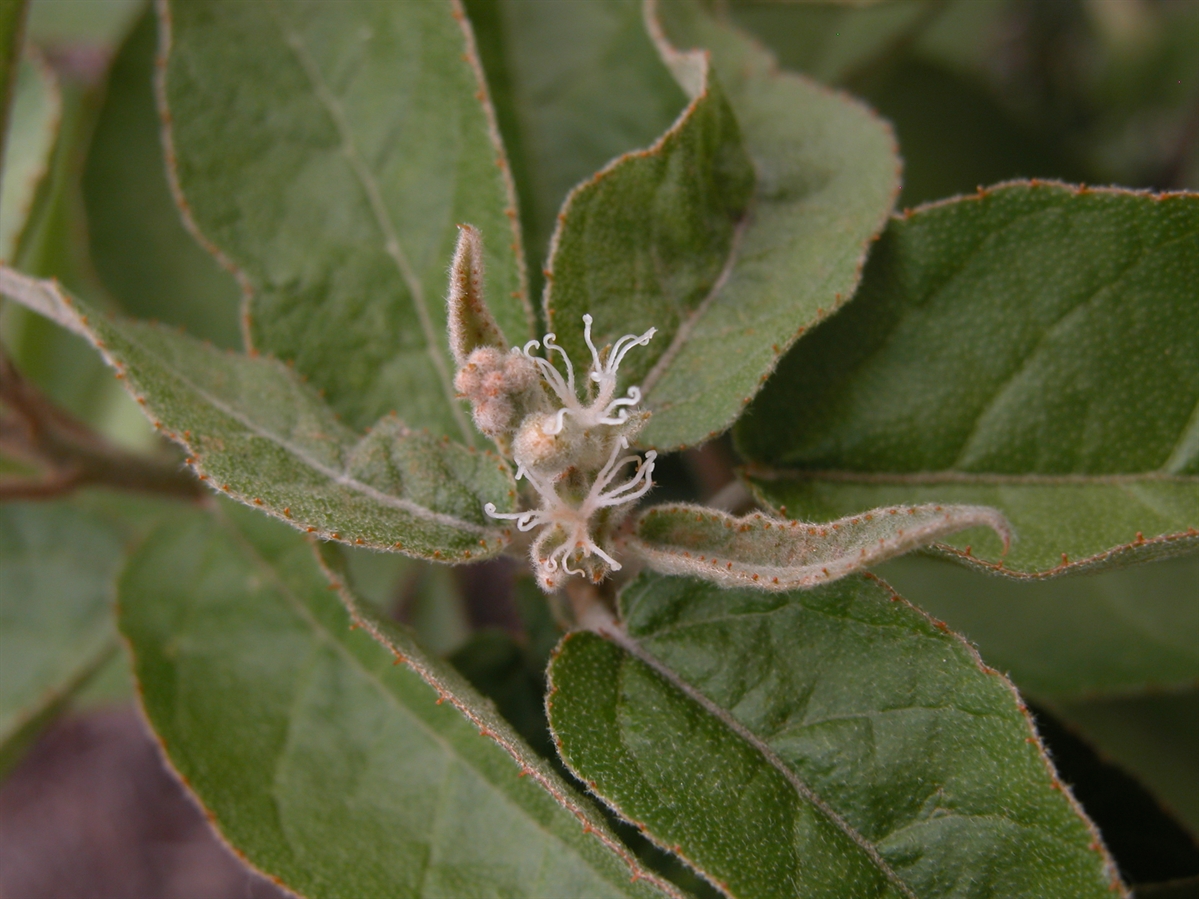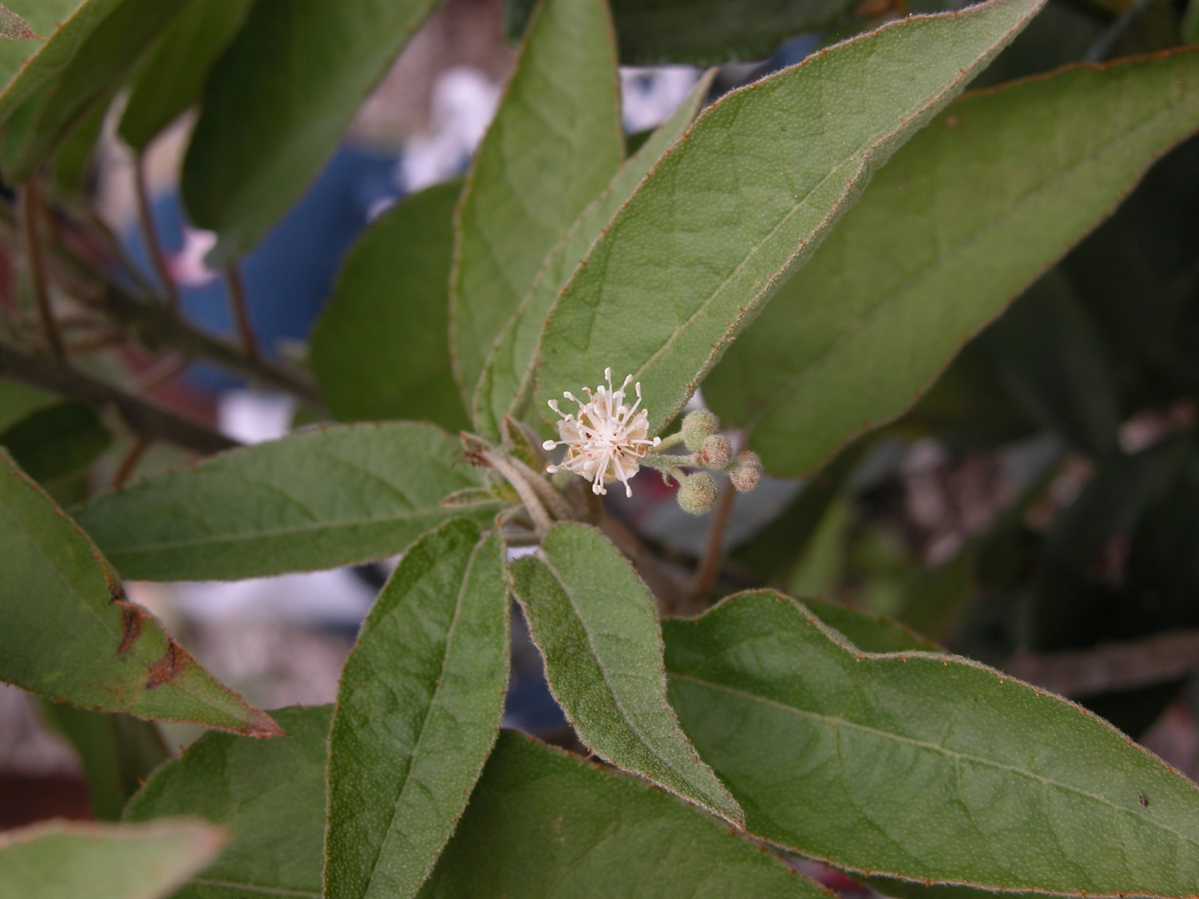Habit: Croton humilis grows as a small to medium shrub up to 2 m in height. The leaves are arranged alternately, ovate to lanceolate, to 8 cm in length with an entire to crennate margin and acuminate to mucronate leaf apex. The leaf surface is stellate with stipitate glands along the edge
Croton humilis is dioecious. The incomplete, imperfect actinomorphic, flowers are arranged in axillary or terminal racemes. Staminate flowers have 5 unfused, green, ciliate, sepals in the calyx. The corolla has 5 unfused, white petals. There are 12 stamens and no carpel. The carpellate flowers have 5 unfused sepals in the calyx. The corolla has 5 unfused white petals. There are no stamens. The superior ovary has 3 locules. The fruit is a 3-parted capsule.
Habitat: Croton humilis grows on a limestone substrate along the edges of Dry Broadleaf Evergreen Formations (coppice) most typically in Shrublands.
Distribution: Croton humilis occurs in the central island groupings in the Lucayan Archipelago, the Caribbean, and parts of the southern United States.
Medicinal/Cultural/Economic usage: Croton humilis is is not known to be used medicinally in the Lucayan Archipelago.

